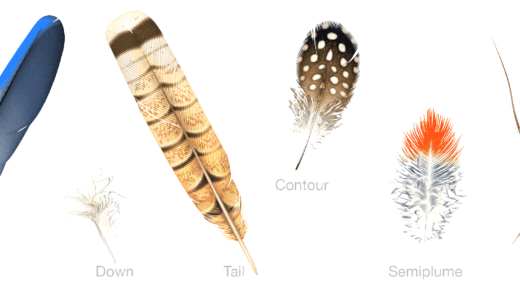Underwater fossils provide essential insights into ancient ecosystems and marine life evolution. They differ from land fossils in preservation conditions and types. Safety and legal regulations are crucial for fossil hunting. Amateur hunters should research, use proper gear, and follow safety precautions while understanding local laws on fossil collection.
Types of Underwater Fossils: Discovering the Diversity
Underwater fossils encompass a fascinating variety of specimens that tell stories of life long gone. The main types of underwater fossils include:
- Corals: These marine organisms contribute to the reef structures we see today. Fossilized corals can reveal ancient environments.
- Shells: Mollusk shells, often beautifully preserved, showcase the biodiversity of aquatic life.
- Bones: Fish and other vertebrates leave behind bones that can be crucial for understanding prehistoric ecosystems.
- Plant fossils: Aquatic plants like seaweeds can also fossilize, providing insights into past climate conditions.
Each type of fossil presents unique information about the organisms that once thrived in our waters. For instance, coral fossils can help scientists understand the health of ancient reefs, while shells can indicate the biodiversity of the area at that time.
How Underwater Fossils Differ from Land Fossils
Underwater fossils differ significantly from those found on land. The preservation conditions in aquatic environments often lead to unique characteristics:
- Water Saturation: Fossils found underwater are frequently more saturated with minerals, which can enhance their preservation.
- Soft Tissue Preservation: In some cases, soft tissues can be preserved better in anaerobic (low-oxygen) underwater settings than in terrestrial environments.
- Environmental Influences: Factors like sediment type and water chemistry play a crucial role in how fossils are formed and preserved.
Understanding these differences is essential for paleontologists. It helps them interpret the fossil record accurately and understand the ecological dynamics of ancient environments.
Techniques for Finding Fossils in Rivers and Lakes
Finding underwater fossils requires specific techniques and tools to enhance the chances of discovery. Here are some effective methods:
- Snorkeling and Scuba Diving: These methods allow collectors to explore various depths and locate fossils.
- Using Metal Detectors: Some fossils, especially those with metallic components, can be detected using metal detectors.
- Water Sampling: Collecting sediment samples from riverbeds can reveal small fossils that are otherwise unnoticed.
Each technique has its advantages, and using a combination can yield better results. Preparing adequately with the right tools and knowledge is essential for successful underwater fossil hunting.
Famous Underwater Fossil Discoveries and Their Significance
Underwater fossils have led to some remarkable discoveries that significantly advance our understanding of prehistoric life. Notable finds include:
- The Late Cretaceous Fossils in the Gulf of Mexico: These fossils provide insights into the marine life that existed before the mass extinction event. Discoveries of shark teeth and ammonites illustrate the biodiversity of that era.
- The 2008 Discovery of a Giant Sea Scorpion: Found in a lake in Sweden, this fossil was over 2 meters long and highlights the predatory nature of ancient marine environments.
- Fossilized Whale Skeletons: In various underwater sites, fossilized remains of ancient whales have been uncovered, shedding light on their evolution and adaptations to aquatic life.
Each of these discoveries holds immense significance. They not only help reconstruct ancient ecosystems but also enhance our understanding of evolutionary processes. For instance, the giant sea scorpion reveals how predatory dynamics have shifted over millions of years.
Environmental Factors Affecting Underwater Fossils
Environmental conditions play a crucial role in the preservation of underwater fossils. Key factors include:
- Water Chemistry: The pH level and mineral content of water can accelerate or hinder fossilization processes. For example, alkaline waters tend to preserve bones better than acidic ones.
- Temperature: Colder temperatures often lead to slower decomposition rates, which can favor fossil preservation.
- Sediment Type: The type of sediment, whether clay, silt, or sand, affects how fossils are buried and protected from erosion.
These factors combined can determine the quality and quantity of fossils found in underwater settings. Understanding these influences is essential for paleontologists aiming to locate and interpret these precious remnants of the past.
Challenges of Underwater Fossil Hunting
Underwater fossil hunting presents several unique challenges that enthusiasts must navigate. These challenges include:
- Visibility Issues: Often, murky waters can limit visibility, making it difficult to spot fossils.
- Strong Currents: Rivers and lakes can have unpredictable currents, posing risks for divers and snorkelers.
- Legal Restrictions: Fossil hunting may be subject to strict regulations, and hunters must ensure they are compliant to avoid legal repercussions.
Being aware of these challenges can help fossil hunters prepare adequately. Proper training, equipment, and knowledge of local laws can significantly enhance the success and safety of underwater fossil hunting adventures.
The Role of Underwater Fossils in Understanding Prehistoric Life
Underwater fossils play a crucial role in piecing together the puzzle of prehistoric life. They offer invaluable insights into ancient ecosystems and the organisms that inhabited them. Underwater fossils help scientists understand the evolution of marine life and the environmental conditions of different geological periods. For example, the study of fossilized corals can reveal changes in ocean temperatures and acidity over millions of years.
Moreover, underwater fossils can provide evidence of mass extinction events, such as the one that wiped out the dinosaurs. The fossil record allows researchers to trace back the lineage of various species and comprehend how life on Earth has evolved. From understanding food webs to climate shifts, underwater fossils contribute significantly to our knowledge of historical biodiversity.
Tips for Amateur Underwater Fossil Hunting
For those eager to dive into the world of underwater fossil hunting, here are some essential tips:
- Start with Research: Understand the types of underwater fossils that are common in your area. Familiarize yourself with local laws regarding fossil collection.
- Use the Right Gear: Invest in quality snorkeling or scuba diving equipment. A good underwater flashlight can help illuminate dark areas where fossils might be hidden.
- Join Local Groups: Consider joining local fossil hunting clubs or online forums. They can provide valuable insights and tips from experienced hunters.
- Practice Safety: Always dive with a buddy, and make sure to check the weather and water conditions before heading out.
- Document Your Finds: Take photos and notes on where you find fossils. This information can be useful for future reference and contributes to scientific research.
By following these tips, amateur fossil hunters can embark on rewarding adventures while contributing to our understanding of prehistoric life.
Safety Precautions for Underwater Fossil Hunting
Safety should always be a priority when hunting for underwater fossils. Here are some key precautions to consider:
- Buddy System: Always go fossil hunting with a partner. This ensures that help is available in case of emergencies.
- Know Your Limits: Be aware of your swimming and diving skills. Do not venture into deep or rough waters if you are inexperienced.
- Wear Protective Gear: A wetsuit can protect against cold water and sharp objects. Additionally, wearing fins can help navigate underwater currents more efficiently.
- Stay Hydrated: Even when underwater, it’s crucial to stay hydrated. Drink water before and after your dive.
- Check Local Regulations: Ensure you are familiar with the legal regulations surrounding fossil collection in your area to avoid penalties.
Implementing these safety measures can help ensure a safe and enjoyable fossil hunting experience.
Legal Regulations on Underwater Fossil Collection
Understanding the legal regulations surrounding underwater fossil collection is essential for all fossil hunters. Laws vary by location, but some common regulations include:
- Permits: Many areas require permits for fossil collection, especially in protected or sensitive environments.
- Protected Species: Some fossils, particularly those from endangered or threatened species, may be illegal to collect. Always check local guidelines.
- Reporting Finds: In some regions, significant fossil discoveries must be reported to local authorities or scientific bodies for proper documentation.
- Commercial Collection: Selling fossils collected from public lands may be prohibited without specific permissions.
By adhering to legal regulations, fossil hunters can help preserve these valuable resources for future generations and contribute positively to the scientific community.





Comments are closed.